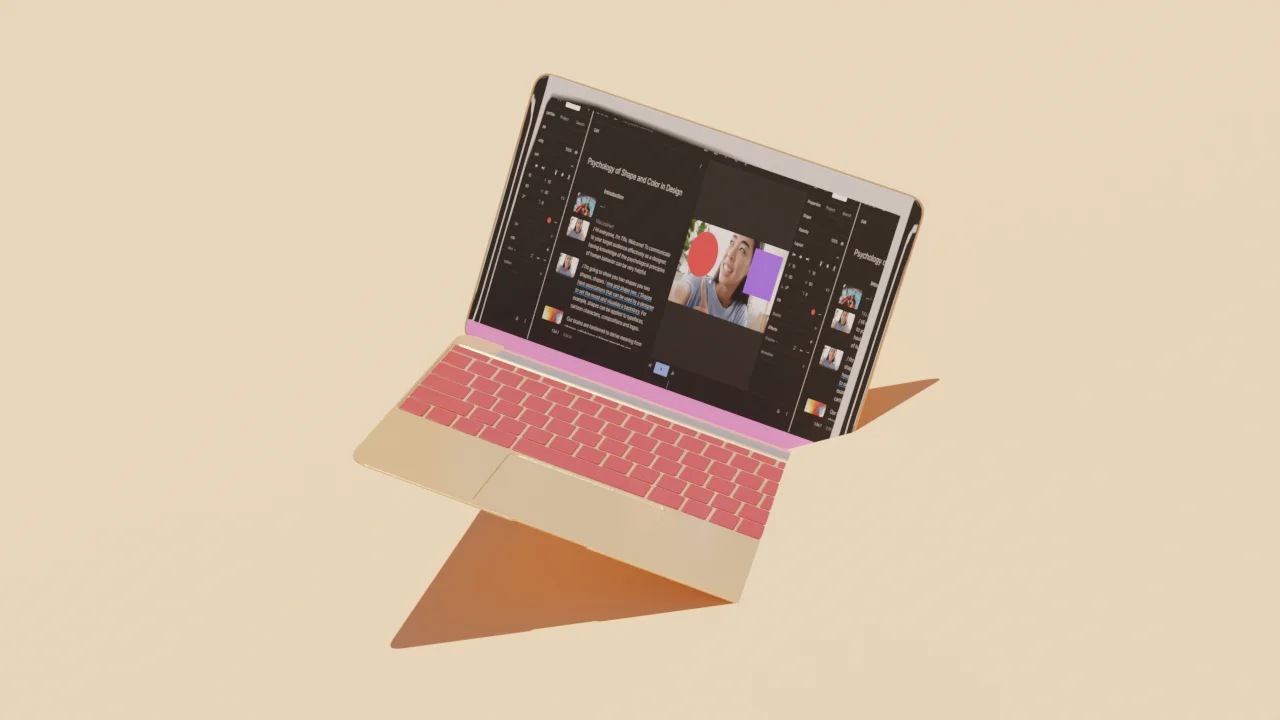Nothing ruins a listening experience like hitting play on the next episode of a podcast and getting ambushed by a deafening volume increase.
To spare your podcast listeners that horror, you’ll want to normalize your playback volume using the podcast loudness standard. This step guarantees volume consistency from one episode to the next (and even one show to the next), so your listeners don’t need to constantly adjust their volume.
What is LUFS and why is it important?
LUFS, which stands for Loudness Units relative to Full Scale, measures the average perceived loudness (volume) over the entire span of an audio file, rather than measuring loudness at a precise moment. To adhere to the standard LUFS for podcasts, you don’t necessarily keep your overall loudness exactly the same throughout an entire episode — that would sound unnatural. Instead, you’ll use software to establish the same average loudness for every podcast installment in post production and ensure a consistent listener experience from episode to episode.
You may also hear the term LKFS instead of LUFS, primarily in broadcast TV. LKFS stands for Loudness K-weighted relative to Full Scale, but both measurements mean the same thing.
Apple Podcasts recommends setting your podcast loudness setting to -16 LUFS and Spotify Podcasts recommends -14 LUFS. Most podcasts use Apple's -16 LUFS standard. Note that these are negative numbers we’re dealing with, so -14 LUFS is louder than -16 LUFS.
What is a peak?
Peak level refers to the highest point of an audio wave signal at a specific point in time. Pay attention to your peak levels, because they show you how loud your audio can get before it begins to distort.
Peak is an essential component of dynamic range. That’s the ratio of a recording’s loudest peak and quietest peak. If your recording’s dynamic range is too wide, you might struggle to hear the quietest sections without the loudest sections being painfully loud.
Consider using a limiter (a tool that helps keep loudest moments below a fixed threshold) to ensure your peaks never exceed -1 dB, preventing clipping and distortion.
Peak only measures digital signal, but every listening device — including Bluetooth speakers, CD players, smartphones, etc. — converts a digital audio signal to analog before you hear it. For a more accurate measurement, you want to look at what’s called a true peak meter, which factors in this digital-to-analog process. The analog signal may end up with a higher peak level than the digital signal.
The recommended standard true peak value for podcasting is -1.0 dB (decibels). This true peak level guarantees your podcast still sounds great once you convert your uncompressed audio to a compressed audio format like MP3.
How do I get the right LUFS?
Now that you’re familiar with LUFS and understand the importance of loudness levels, it’s time to learn how to export your podcast at the correct LUFS value. You can easily do this using Descript’s auto-leveling feature, which ensures the audio levels in every clip are consistent across your entire project. Auto-leveling defaults to the podcast standard -16 LUFS, but you can change your LUFS value to whatever you want. Here’s how:
- Create a new projectOpen Descript, click the blue “New” button in the top-right corner, and select “Project” from the drop-down menu. Type in a name for your project and click “Create Project.”
- Ensure auto-leveling is enabledDescript’s auto-leveling feature turns on by default, but before you import or record audio, here’s how to make sure it’s enabled: Click the Descript logo in the top left corner. Next, click “Project Settings” and check that the toggle switch next to “Perform automatic leveling on clips” is on. If you need to toggle auto-leveling on or off, make sure to click the blue “Save Changes” button to lock in the change.
- Import or record your podcast audio If you’ve already recorded your podcast, click the “Choose a file…” button to import your audio file into Descript. If you’re recording your podcast directly in Descript, click the mic-shaped “Record Audio” button to begin recording.
- Select the right LUFS before exporting your audio file Once you’re ready to export your completed podcast episode, click the “Share” button at the top-right corner, select the “Export” tab, and then the “Audio” icon. Look for the “Normalize Volume” dropdown menu which defaults to the podcast standard -16 LUFS (If you want, you can change it to -14, -18, -23, or -24 LUFS). With your desired LUFS value selected, click the “Export” button to save your podcast episode.
Pro tip: Descript auto-levels every audio clip you import. But because the software bases its auto-leveling on the average loudness of the entire original clip, you may want to re-apply auto-leveling to a clip if you’ve edited out a large portion of it. To do this, right-click your edited audio clip and select “Auto-level clip” from the dropdown menu.
Final thoughts
While we think Descript’s auto-level feature is one of the easiest ways to handle loudness normalization, other popular audio-editing tools offer similar functionality. Whichever app you choose, do your due diligence and export your podcast episodes at the recommended LUFS standard. Your podcasts will sound better and your listeners’ eardrums will be forever grateful.
Frequently asked questions
How loud should a podcast be?
Most podcast creators aim for about -16 LUFS (the Apple Podcasts guideline) to keep volume consistent. Some hosts, like Spotify, recommend -14 LUFS, which is slightly louder. Whichever you pick, keep your true peak around -1.0 dB so your audio plays clearly on different devices.











































